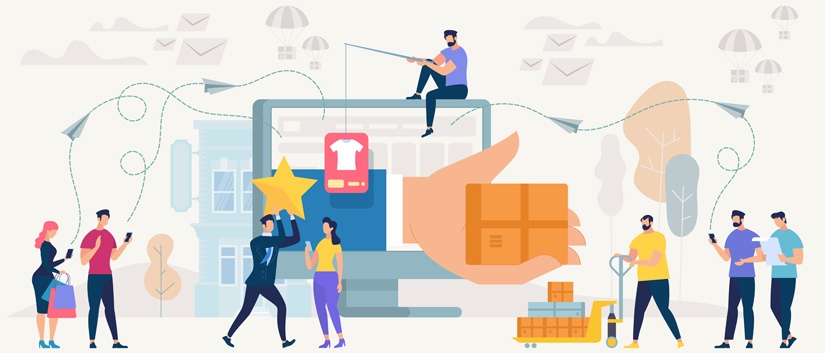Buyer persona gives that edge every organization needs to chase their coveted goals in terms of increased lead capturing, successful selling, better buyer experience, increased buyer retention and loyalty. In short, creating buyer persona is about gaining a comprehensive understanding of the customer – likes, preferences, demand, need, behaviors, dislikes, motivations and values – to attract, convert, communicate and gain loyalty.
Taking the advanced analytics route, buyer persona is a destination reached by assimilating critical data associated with the customer – Data around the customer matters, from customer data, demography, social, customer journey data, to survey data among others that prove critical to the exercise. With data at hand, it is also important to weigh Clustering vs classification techniques for creating buyer personas and use the appropriate machine learning technique as deemed ideal for a given situation to reap rewards out of the buyer persona exercise.
Pondering on Clustering vs classification techniques for creating buyer personas
As to the choice of clustering vs classification techniques for creating buyer personas, it hinges on what an organization wants to accomplish through the ‘buyer persona’ exercise – Does the need point towards segmenting the most profitable customers or towards augmenting granularity in terms of finding customers who purchase more than X-value or customers who use online channel for research and buy from in-store or pointing to a need for engaging customers who leave half-way through the conversion pipeline.
Were it for buyer segmentation scenario not wholly based on ‘multiple variables or factors’ that are ultimately used for the exercise, clustering would go down as the ideal choice for creating buyer personas. But when this buyer persona exercise boils down to creating micro-segments of buyer personas, classification ranks as the top choice for the exercise.
Let us explore the data situation as well as the data connections from a retailer’s data estate – data connections in terms of similarities reveal the following – customers between the age group of 20 to 25, male, buying apparel worth 2X-value in a single transaction, purchasing the most-modern outfits. In terms of similarities established from the data, it is just the starting point. Carrying on with the micro-segmentation means looking for other critical factors that can help create buyer personas and put them into micro-segmented buckets.
Exploratory Data Analysis to the rescue
The decision to weigh Clustering vs classification techniques for creating buyer personas begins with the Exploratory Data Analysis (EDA). While sifting through data at this stage, we are faced with two important queries:
- Is the data so disparate that it makes it a challenging task to find similarities or likeliness or is data not offering insight on the similarities between customers?
- Does data exhibit similarities in a way that ‘segments’ of buyer personas can be created?
Classification technique for creating buyer persona
During the EDA stage if the data throws light on some striking similarities among customers though on a high level, and if there is a need to do micro-segmentation, classification technique is the ideal one.
For instance, let us look at some of the findings from the datasets that reveals similarities among customers, and in this case, behavioral data, came to the aid in developing Persona A and Persona B. Persona A stands for mobile-led customers who invariably use mobiles to transact with the retailer and persona B stand for customers who only make purchases in-store. There is something to go on, in terms of similarities unearthed during the EDA stage.
The decision to go in with the classification techniques for creating buyer personas means looking for more of those critical variables that can help put the buyers into micro-segments of personas. This could relate to the data associated with the channels, affinity towards products or affinity towards discounts and promotions or other crucial factors.
Clustering for creating buyer persona
With no insights on similarities established among customers from data during the EDA stage, clustering is taken up to create buyer personas. Clustering draws the boundary between buyer persona groups. Now considering ‘buyer purchase’ as the input variable and targeted marketing as the outcome variable, cluster analysis guides in finding Personas in the form of ‘Frequent Buyer’, Medium-range Buyer and Infrequent Buyer. This gives a business to run targeted marketing campaigns – cross-sell or upsell products to the frequent buyers and other attractive promotions to the other buyer personas to strike it rich with the marketing campaigns.
With the analytics lens falling on the data estate of an organization, a conclusion on the clustering vs classification techniques for creating buyer personas debate can be reached; and most importantly, the right machine learning technique can be used to reap rewards right across the customer journey – prompting a customer to buy more, addressing pain points experienced by customers, engaging with customers using the channel of their choice, turning the customer churn challenge into customer retention opportunity and increasing the number of loyal customers – organizations go through rewarding experiences by creating buyer persona.





